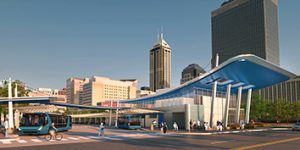Much-awaited IndyGo transit center set to open in late June
More than 700 bus stop changes will be made throughout Marion County to prepare for the June 26 opening and 31 related route changes. Updates include new and eliminated stops, and stop relocations.



